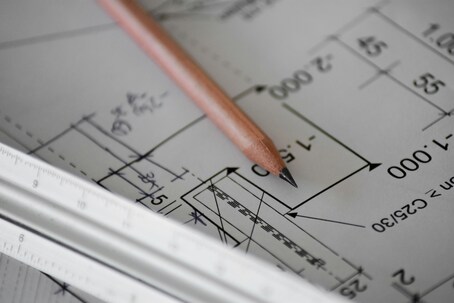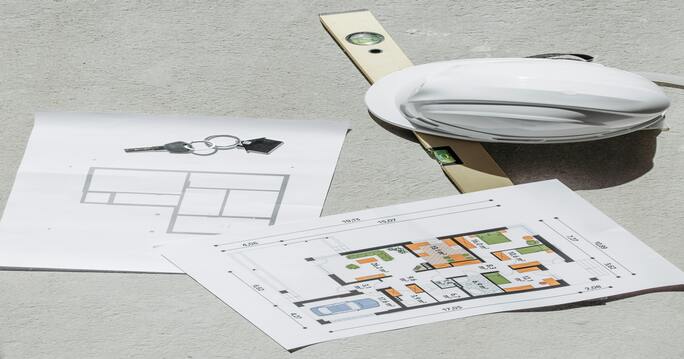Crafting Your Dream Home from the Ground Up
Building a custom home is an exciting and rewarding venture. Imagine living in a space that perfectly encapsulates your style, meets all your needs, and is designed with your family in mind. However, the process can be daunting if you don’t know where to start. This blog post is here to guide you through every step of building your dream home, from initial concepts to moving in. Let’s explore the key aspects of custom home building.
Understanding the Custom Home Concept
 Building a custom home means creating a living space tailored specifically to your preferences and lifestyle. Unlike purchasing a pre-built home, this process allows you to make decisions about every detail, from the architectural style to the smallest fixtures.
Building a custom home means creating a living space tailored specifically to your preferences and lifestyle. Unlike purchasing a pre-built home, this process allows you to make decisions about every detail, from the architectural style to the smallest fixtures.
One of the main benefits of custom homes is the ability to design a space that fits your needs perfectly. Whether it’s adding an extra bedroom, including a home office, or ensuring eco-friendly features, the possibilities are endless. This flexibility makes custom homes increasingly popular among homeowners.
Another advantage is the potential for long-term cost savings. While the initial investment might be higher, a well-designed custom home can be more energy-efficient and require fewer repairs over time.
Assessing Your Needs
Before you start designing, it’s crucial to assess your needs. Begin by thinking about the number of bedrooms and bathrooms you’ll require. Consider the current and future needs of your family, such as potential growth or elderly relatives moving in.
Specific features can also enhance your home. For instance, a home office has become essential for many due to the rise in remote work. Think about other unique spaces like a gym, nursery, or entertainment room.
Sustainability is another important factor. More homeowners are interested in reducing their environmental footprint. Incorporating energy-efficient appliances, solar panels, and sustainable materials can make your home more eco-friendly.
Setting a Realistic Budget
Establishing a budget is a critical step in your custom home-building journey. Begin by considering the cost of the land. Prices can vary significantly based on location, so research thoroughly.
Next, account for materials. High-quality materials might cost more upfront but offer durability and long-term savings. Don’t forget to factor in labor costs, which include hiring contractors and various specialists.
Additional expenses can quickly add up. This might include permits, landscaping, interior decorating, and unexpected costs that arise during construction. It’s wise to set aside a contingency fund to cover any surprises.
Finding the Perfect Location
Choosing the right plot of land is paramount. Start by considering the neighborhood. Look for areas with good schools, amenities, and a sense of community. Visit different neighborhoods at various times to get a genuine feel for them.
Accessibility is crucial. Ensure your plot has easy access to main roads, public transport, and essential services like hospitals and grocery stores.
The environmental impact should also be on your radar. Check for any zoning laws or environmental regulations that might affect your building. Consider the land’s topography, drainage, and potential for natural disasters.

Designing Your Dream Home
Now comes the exciting part – designing your home. Collaborate with experienced architects who can turn your vision into reality. Share your ideas and be open to their suggestions.
Creating a floor plan is next. Think about the flow of your home, ensuring spaces are functional and comfortable. Consider how rooms will be used and how they connect with each other.
Choosing materials and finishes is where you can really express your style. Aim for a balance between aesthetics and durability. Don’t shy away from mixing different textures and colors to create a unique look.
Selecting Reliable Contractors
Your home’s quality will largely depend on the contractors you hire. Start by researching potential builders, electricians, plumbers, and other professionals. Look for those with good reviews and a solid portfolio of previous work.
Interviewing candidates is crucial. Ask about their experience, qualifications, and availability. Get a feel for their communication style and reliability.
Once you’ve narrowed down your options, check references and previous work. This can provide insights into their professionalism and the quality of their work.
Navigating the Permit Process
Building a custom home involves navigating various permits and local building codes. Research the permits required in your area. This might include building, electrical, plumbing, and zoning permits.
Understanding local building codes and regulations is vital. These will dictate certain aspects of your build, such as structural integrity and safety standards. Failing to comply can lead to costly fines or delays.
Engage with local authorities early in the process. They can provide guidance and ensure you’re on the right track. Having all permits in place before construction begins can prevent unwanted interruptions.
Managing the Construction Phase
Managing construction requires careful oversight. Monitor the progress to ensure timelines are being met. Regular site visits can help you stay informed and address any issues promptly.
Staying on schedule is vital to avoid unnecessary costs and delays. Work closely with your contractors to keep the project on track. Be prepared to make decisions promptly to avoid bottlenecks.
Effective communication with your team is essential. Keep open lines of dialogue with your contractors, providing clear instructions and feedback. This ensures everyone is aligned and working towards the same goal.
Final Touches and Moving In
As construction wraps up, focus on the final touches. Landscaping can significantly enhance your home’s curb appeal. Plan your garden, pathways, and outdoor spaces to create a welcoming environment.
Interior decorating is your chance to make the house truly yours. Choose furniture, decor, and artwork that reflect your style and enhance the home’s overall look.
Finally, prepare for the move-in day. Create a checklist to ensure everything is in place. Celebrate this milestone and take pride in the beautiful home you’ve built from the ground up.
Building a custom home is a rewarding experience that allows you to create a space perfectly suited to your needs and style. From assessing your needs to moving in, each step is crucial to ensure a smooth process.
Remember, the most important aspect is planning and preparation. Take your time to research, budget, and design thoughtfully. By doing so, you’ll create a home that brings joy and comfort for years to come.
Ready to start your custom home-building journey? Connect with our expert team today for more tips and guidance to turn your dream home into a reality.
I hope this blog post provides valuable insights and practical tips for homeowners considering building a custom home. By following these steps, readers can confidently undertake the exciting process of creating a home that is uniquely theirs.




